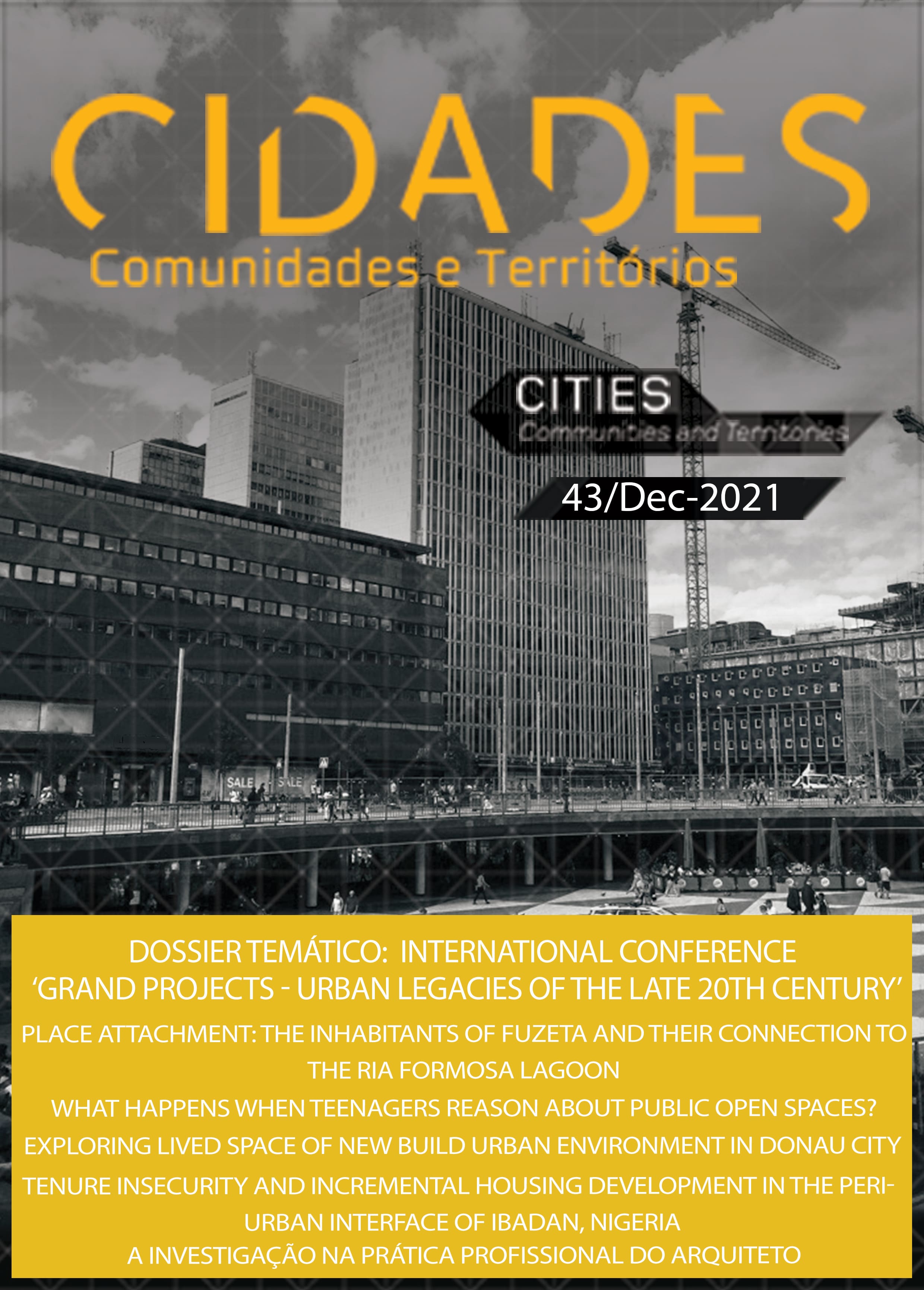Transnational architecture and urbanism
Placing starchitecture in Singapore and Chongqing
Keywords:
star architecture, transnational architecture, urban planning, urban transformationAbstract
The period between 1990 and 2020 witnessed an increase in transnational modes of architectural and urban design, especially with reference to prominent buildings and areas. Among these, the use of famous architectural firms has spread to globalizing cities across Europe, North America, and Asia. In many cases, spectacular buildings designed by a small set of international firms (such as Frank Gehry, Jean Nouvel, Zaha Hadid, Foster+Partners) were and still are intended to alter the fate of a city, as portrayed and promoted in “Bilbao effect” narratives. Despite the clear evidence that contradicts such oversimplified rationales, attention has been largely concentrated on generalized explanations for why urban trends occur, with limited consideration given to understanding how specific projects are planned, designed, realized, and succeed or not within their contexts. By drawing on the literature and two case studies, this paper focuses on the roles that star architecture plays in the processes of developing spectacular buildings. In the conclusions, this contribution suggests future research and decision making pay greater attention to the relations between transnational projects and the local context as well as to the urban effects of such projects rather than to focus primarily on prominent characters in the urban development play and their self-interested narratives.
References
Alaily-Mattar, N., Ponzini, D., & Thierstein A. (Eds.) (2020). About Star Architecture: Reflecting on Cities in Europe, Cham: Springer.
Banham, R. (2020). Megastructure: Urban Futures of the Recent Past. Monacelli Press [orig. 1976].
Coxe, W., Hartung, N.F., Hochberg, H.H., Lewis, B.J., Maister D. H. & Mattox, R. F. P. (1986). Charting Your Course, Architectural Technology, 5, 52–58.
Faulconbridge, J.R. (2009). The Regulation of Design in Global Architecture Firms: Embedding and Emplacing Buildings, Urban Studies, 46(12), 2537-2554.
Frampton, K. (2010). Megaform as Urban Landscape. Urban Champaign: University of Illinois.
Guggenheim, M. & Söderström, O. (Eds.). (2009). Re-Shaping Cities: How Global Mobility Transforms Architecture and Urban Form. London: Routledge.
Gutman, R. (1988). Architectural Practice: A Critical View. New York: Princeton Architectural Press.
Harvey, D. (1994). The Invisible Political Economy of Architectural Production. In T. Bouman, and E. Van Toorn, (Eds.) The Invisible in Architecture (pp. 420–427). London: Academy Editions.
iChongqing [Chongqing International Communication Center for Culture and Tourism] (2020) Documentary: Moshe Safdie: Another Dimension of Architecture. https://www.youtube.com/watch?v=kXfqQNiBlOw
Kaika, M. (2011). Autistic Architecture: The Fall of the Icon and the Rise of the Serial Object of Architecture, Environment and Planning D: Society and Space, 29(6), 968–992.
Kloosterman, R.C. (2010). Building a Career: Labour Practices and Cluster Reproduction in Dutch Architectural Design. Regional Studies, 44(7), 859–871.
Knox, P. L. & Pain, K. (2010). Globalization, Neoliberalism and International Homogeneity in Architecture and Urban Development, Informationen zur Raumentwicklung, 5/6, 417–428.
Larkham, P. J. & Conzen, M. P. (Eds.). (2014). Shapers of Urban Form: Explorations in Morphological Agency. London: Routledge.
Marcuse, P. (2013). Globalization and the Form of Cities. In Jenks, M., Kozak, D., & Takkanon, P. (Eds.) World Cities and Urban Form: Fragmented, Polycentric, Sustainable? (pp. 25–40). London: Routledge.
McCann, E. & Ward, K. (2012). Assembling urbanism: Following Policies and ‘Studying Through’ The Sites and Situations of Policy Making, Environment and Planning A, 44(1), 42–51.
Nasr, J. & Volait, M. (Eds.) (2003). Urbanism: Imported or Exported? Chichester: Wiley Academy.
Olds, K. (2002). Globalization and Urban Change: Capital, Culture, and Pacific Rim Mega-projects. New York: Oxford University Press.
Ong, A. (2011). Hyperbuilding: Spectacle, Speculation, and the Hyperspace of Sovereignty”. In Roy, A. and Ong, A. (2011). Worlding Cities. Asian Experiments and the Art of Being Global (pp. 205–225). Chichester: Blackwell-Wiley.
Palermo, P. C., & Ponzini, D. (2015). Place-making and Urban Development: New Challenges for Planning and Design, London: Routledge.
Ponzini, D. (2012). “Competing Cities and Spectacularizing Urban Landscapes”. In Anheier, H. K., Isar, Y. R., Hoelscher, M. (Eds.) Cities, Cultural Policy and Governance. Cultures and Globalization Series, Vol. 5 (pp. 99-110). London: Sage.
Ponzini, D. (2013). “Branded Megaprojects and Fading Urban Structures in Contemporary Cities”. In Del Cerro Santamaria, G. (Ed.), Urban Megaprojects: A Worldwide View (pp. 107-129). New York: Emerald.
Ponzini, D. (2020), Transnational Architecture and Urbanism: Rethinking How Cities Plan, Transform, and Learn. London: Routledge.
Ponzini, D., & Arosio, P. M. (2017). “Urban Effects of the Transnational Circulation of Branded Buildings: Comparing Two Skyscrapers and Their Context in Barcelona and Doha” Urban Design International, 22(1), 28–46.
Ponzini, D., Fotev S., & Mavaracchio F. (2016). “Place-making or place-faking? The paradoxical effects of transnational circulation of architectural and urban development projects”. In Richards, G., Russo, A. P. (Eds.) Reinventing the Local in Tourism Producing, Consuming and Negotiating Place (pp. 153-170). Bristol: Channel View.
Ponzini, D., & Manfredini, F. (2017). “New Methods for Studying Transnational Urbanism and Architecture: A Primer”, Territorio, 80, 97–110.
Ponzini, D., & Nastasi, M. (2016). Starchitecture. Scenes, Actors and Spectacles in Contemporary Cities. New York: Monacelli Press [second edition].
Pow, C. P. (2014). License to Travel: Policy Assemblage and the ‘Singapore Model’, City, 18(3), 287–306.
Sarfatti-Larson, M. (1995). Behind the Postmodern Facade: Architectural Change in late Twentieth-Century America. Berkley: University of California Press.
Shane, D.G. (2011). Urban Design since 1945. A Global Perspective. New York: Wiley.
Yap, E.X. (2013). The Transnational Assembling of Marina Bay, Singapore, Singapore Journal of Tropical Geography, 34(3), 390–406.
Yik, J., (Ed.) (2012). Urban Transformations: Overseas Planning and Urban Design Works by Singapore Consultancy Firms. Singapore: Urban Redevelopment Authority.
Downloads
Published
Issue
Section
License
Copyright (c) 2021 Davide Ponzini

This work is licensed under a Creative Commons Attribution-NonCommercial-NoDerivatives 4.0 International License.
CIDADES, Comunidades e Territórios by DINÂMIA'CET-Iscte is licensed under a CC-BY licence.






